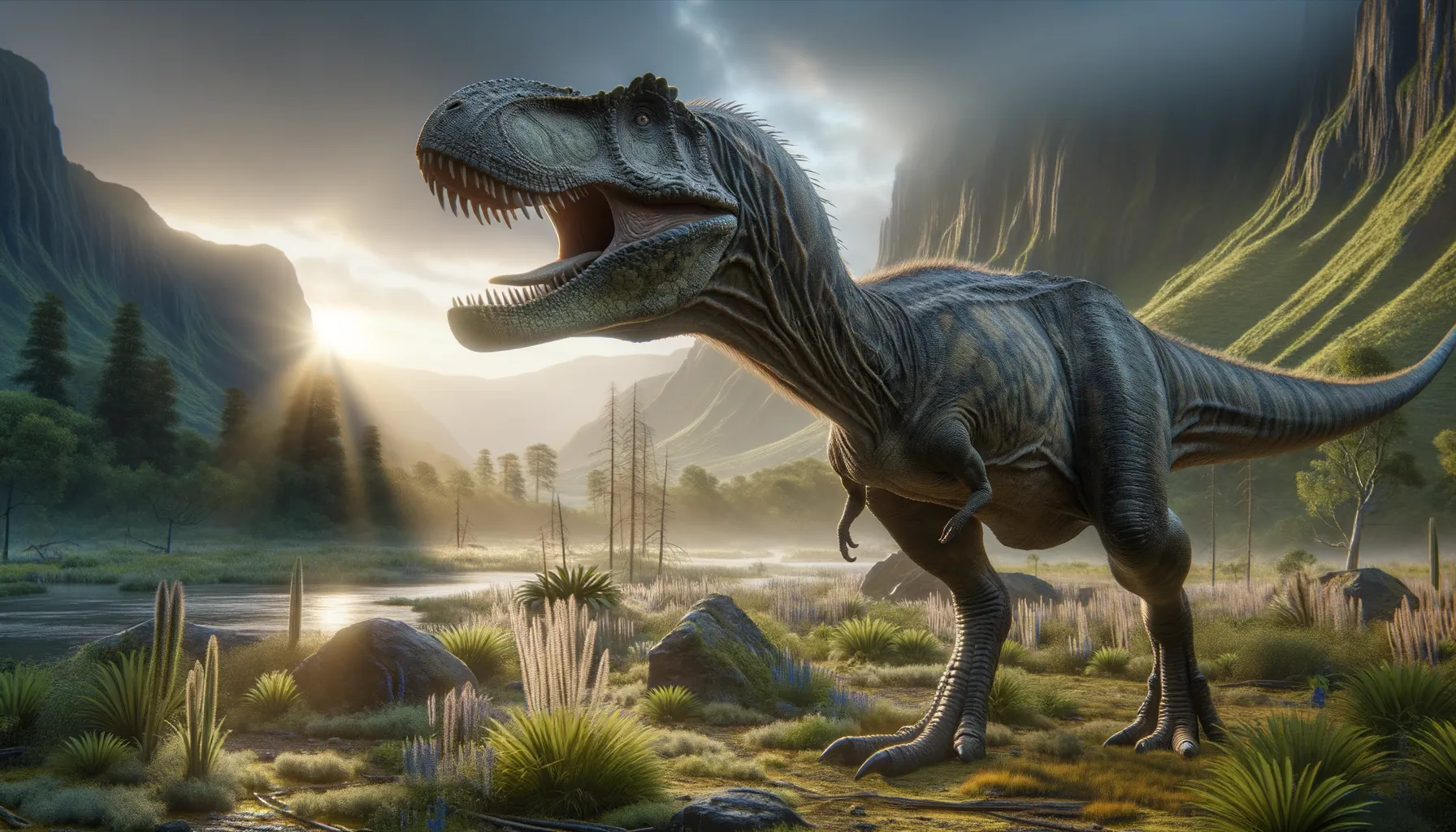
Aublysodon
Mysterious predator of the ancient world.
Period
Cretaceous
Length
Approximately 8 meters in length.
Height
Roughly 3 meters tall at the hip.
Weight
Estimated around 1,000 kilograms.
Aublysodon was a theropod dinosaur with notable teeth and a mysterious classification history. Originally, its identification hinged on a single tooth specimen, leading to much debate. It lived during the late Cretaceous period and was a predator, likely relying on its agile body to catch prey. While many aspects of its biology remain speculative, it plays a crucial role in understanding theropod diversity.
Diet
Aublysodon was a carnivore, preying on smaller dinosaurs, mammals, and possibly scavenging. Its sharp teeth suggest it could slice through meat effectively, helping it secure its prey.
Hunting
Aublysodon likely hunted alone, using stealth and speed to ambush prey. Its physical build suggests a capacity for quick, agile movements, essential for capturing live prey.
Environmental challenges
Living during the late Cretaceous, Aublysodon faced environments changing from humid and forested to more open plains. This shift could have affected its hunting strategies and prey availability. Predation pressure from larger theropods might have forced Aublysodon to adapt its hunting or foraging behaviors.
Speed
Likely moderate, as it was a bipedal theropod.
Lifespan
Estimated to be around 20 to 30 years.
First discovery
First described in 1868 by Joseph Leidy.
Fun Facts
- Aublysodon was a dinosaur that lived during the Late Cretaceous period, around 70 to 66 million years ago.
- Its name, Aublysodon, means 'backward tooth' because its teeth had distinct serrations that pointed backward.
- This dinosaur is known primarily from its unique teeth, which were the initial basis for its classification.
- Aublysodon is believed to be a member of the tyrannosaurid family, which includes the famous Tyrannosaurus rex.
- Fossils of Aublysodon have been found in North America, particularly in the western United States.
- There's still some debate among paleontologists about Aublysodon's exact place in the dinosaur family tree due to limited fossil evidence.
- Because of the scarce remains, some scientists think Aublysodon might be a juvenile of another known species rather than a stand-alone genus.
Growth and Development
Aublysodon's growth involved developing robust limbs and powerful jaws, vital for a theropod's predatory lifestyle. Juvenile dinosaurs would likely have had to grow rapidly to avoid predation. Skeletal evidence suggests that growth rates were typical of theropods, showing different challenges at each life stage.
Habitat
Aublysodon inhabited regions that were diverse, ranging from dense forests to open plains. This variety likely required adaptability in seeking shelter and prey. Rivers and lakes in its environment could have served as vital sources of water and potential hunting grounds.
Interaction with other species
Aublysodon would have interacted with various dinosaur species, including both herbivores and other carnivores. Competition with similar-sized predators likely shaped its habits and territory. Its survival would have depended on avoiding conflicts with larger theropods.
Natural lifespan
Its lifespan naturally extended to about 20-30 years.
Reproduction
Like other theropods, Aublysodon would have laid eggs, possibly in nests built on the ground. Parental care is speculative, but some level of nest protection and care for young likely evolved. Such reproductive strategies would influence survival rates of its offspring.
Social behaviour
Aublysodon's social behavior is largely speculative due to limited fossils. It might have been solitary, hunting alone, but possibly formed loose associations for mating. The social hierarchy could have been dictated by size and strength in combat or display.
Fossil locations
Fossil discoveries associated with Aublysodon are primarily from North America. Much of its fossil record relies on teeth, complicating thorough classification. These finds provide valuable insights into the late Cretaceous theropod diversity.
